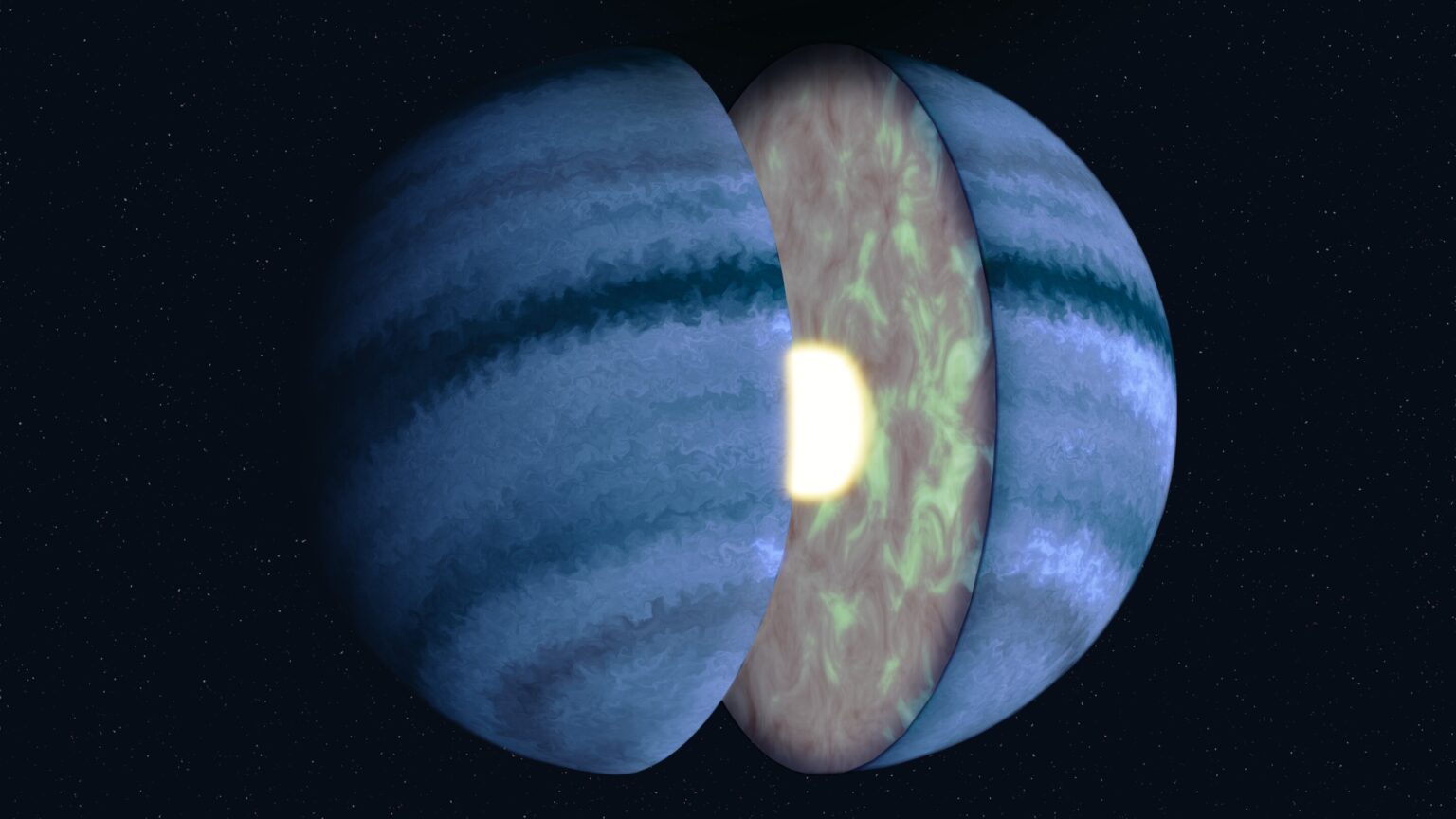Astronomers use the James Webb telescope to study the internal structure of the planet WASP-107 b. It turned out that this loose world has an unexpectedly dense core. The chemical composition of the atmosphere of this world was also determined.

James Webb explored the heavy core of an exoplanet
Surprisingly low amounts of methane and an extra-large core lurk inside the cotton candy-like planet WASP-107 b. These discoveries, based on data obtained by the James Webb Space Telescope, mark the first measurements of the mass of the core of an exoplanet and are likely to form the basis for future studies of the atmospheres and internal structure of exoplanets, which is a key aspect in the search for habitable worlds outside our Solar System.
“Looking into the interior of a planet hundreds of light-years away sounds almost impossible, but when you know the mass, radius, atmospheric composition, and hotness of its interior, you’ve got all the pieces you need to get an idea of what’s inside and how heavy that core is,” said the lead author of the study David Sing, a Bloomberg Distinguished Professor of Earth and Planetary Sciences at Johns Hopkins University.
A study published in the journal Nature shows that the planet WASP-107 b has a thousand times less methane than expected, and the core is 12 times more massive than Earth’s. The world, shrouded in a scorching atmosphere, fluffy as cotton, orbits a star about 200 light-years away. It is the size of Jupiter, but only a tenth of its mass.
Although the planet has methane, the building material for life on Earth, it is not considered habitable due to its proximity to the mother star and the lack of a solid surface. However, the gas giant may contain important clues about the later stages of planetary evolution.
Chemical composition of the planet WASP-107 b
In a separate study, other scientists also discovered methane using the James Webb Telescope and drew similar conclusions about the size and density of the planet.
New measurements of methane indicate that its molecules turn into other compounds when they rise up from the depths of the planet, interacting with a mixture of other chemicals and starlight in the upper atmosphere. The team also measured sulfur dioxide, water vapor, carbon dioxide and carbon monoxide and found that WASP-107 b contained more heavy elements than Uranus and Neptune.
According to Sing, the chemical profile of the planet is beginning to reveal key pieces of the puzzle about how planetary atmospheres behave under extreme conditions. Next year, his team will make similar observations using the James Webb Telescope on another 25 planets.
Excess heat inside the planet
According to Zafar Rustamkulov, a doctoral student in planetary science at Johns Hopkins University, who was one of the leaders of the study, scientists assumed that the unusually large radius of the planet was a consequence of the presence of a heat source inside it. By combining atmospheric and subsurface physics models with James Webb’s data on WASP-107 b, the team found out how the thermodynamics of the planet affected its observed atmosphere.
According to Rustamkulov, the new findings also demonstrate the clearest connection that scientists have been able to establish between the interior of the exoplanet and the upper layers of its atmosphere. Last year, the James Webb Telescope detected sulfur dioxide at a distance of about 700 light-years on another exoplanet called WASP-39, which became the first evidence of the presence of an atmospheric compound created as a result of reactions under the influence of starlight.
The Johns Hopkins team is now focusing on what can keep the planet’s core hot, and expects that forces similar to those that cause tides in Earth’s oceans are in effect here. They plan to test whether the planet is stretched and attracted by its star and how this can explain the high core temperature.
According to phys.org
Follow us on Twitter to get the most interesting space news in time
https://twitter.com/ust_magazine


